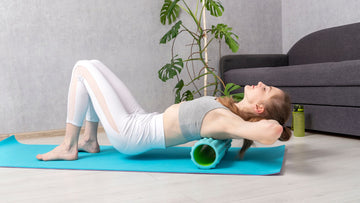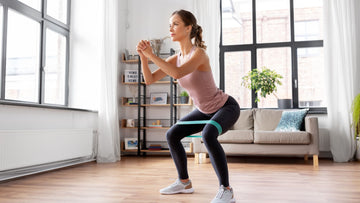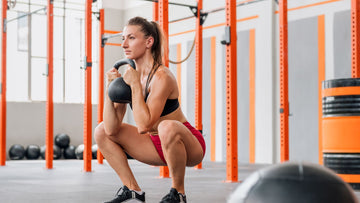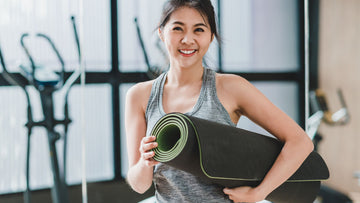Mastering Mobility: The Ultimate Guide to Foam Rollers
In the realm of fitness and wellness, the pursuit of physical excellence extends beyond mere strength and endurance. A critical component that often takes a backseat is mobility – the ability to move freely and painlessly through a full range of motion. Enter the foam roller, an unassuming yet powerful tool that has gained widespread recognition for its role in enhancing mobility, flexibility, and overall muscular health. In this comprehensive guide, we'll embark on a journey through the world of Foam Rollers, exploring their benefits, how they work, various techniques, and how you can effectively integrate them into your fitness routine. Whether you're a fitness enthusiast, an athlete, or someone seeking relief from muscular discomfort, mastering the art of foam rolling could be your key to unlocking greater mobility and a more fluid physical experience.
The Science Behind Foam Rolling: How It Works
At first glance, a Foam Rollers might resemble a simple cylindrical object, but its benefits extend far beyond its appearance. Foam rolling, also known as self-myofascial release, involves applying pressure to specific areas of the body using the roller. This pressure helps release tension within the fascia – a connective tissue that envelops muscles, providing them with support and structure. When the fascia becomes tight or adhesions form within it, mobility can be compromised, leading to discomfort and restricted movement. Foam rolling works by breaking down these adhesions, increasing blood flow to the muscles, and promoting relaxation. The result? Improved flexibility, enhanced range of motion, and reduced muscle soreness.
The Many Benefits of Foam Rolling
-
Improved Range of Motion: By releasing tension and adhesions in the muscles and fascia, foam rolling helps improve your joints' range of motion, allowing you to move more freely and efficiently.
-
Reduced Muscle Soreness: Foam rolling after a workout can help alleviate muscle soreness and promote quicker recovery by increasing blood flow to the muscles and reducing inflammation.
-
Enhanced Flexibility: Regular foam rolling can contribute to increased muscle flexibility, making it easier to perform stretches and movements that were once challenging.
-
Better Posture: Foam rolling can target muscles that are often tight due to poor posture, helping to release tension and support better alignment.
-
Injury Prevention: By addressing imbalances and promoting muscular health, foam rolling can play a role in preventing injuries caused by overuse or poor movement patterns.
Foam Rolling Techniques: From Head to Toe
-
Upper Back and Shoulders: Place the foam roller under your upper back and gently roll back and forth, targeting tightness in the muscles between your shoulder blades. To target the shoulders, lie on your side and roll along the outer shoulder muscles.
-
Quadriceps and IT Band: Lie face down with the roller under your thighs. Roll from the top of your thighs to just above your knees, focusing on any areas of tightness. For the IT band, position yourself on your side with the roller under your outer thigh and roll from your hip to your knee.
-
Hamstrings and Calves: Sit on the roller with your legs extended and roll back and forth to target the hamstrings. For the calves, position the roller under your calves and roll from your ankles to just below your knees.
-
Glutes and Hip Flexors: Sit on the roller with one ankle crossed over the opposite knee. Roll back and forth to target the glutes. To address the hip flexors, lie on your stomach with the roller under your hips and roll along the front of your thighs.
Incorporating Foam Rolling Into Your Routine
-
Pre-Workout: Foam rolling before a workout can help prepare your muscles for movement, increase blood flow, and improve mobility. Focus on areas that feel tight or restricted.
-
Post-Workout: After exercising, foam rolling can aid in reducing muscle soreness and preventing post-workout stiffness. Spend extra time on the muscles you worked during your session.
-
Rest Days: Foam rolling on rest days can help maintain muscular health and prevent the buildup of tension over time.
-
Targeted Sessions: Dedicate specific sessions to thoroughly foam roll different muscle groups, paying attention to areas that are prone to tightness or discomfort.
Tips for Effective Foam Rolling
-
Start Slowly: If you're new to foam rolling, start with shorter sessions and gradually increase the duration as your body adapts.
-
Pressure and Sensation: Foam rolling can be uncomfortable, but it shouldn't be excessively painful. Aim for a moderate level of pressure that feels tolerable.
-
Breathe and Relax: Focus on your breathing while foam rolling and try to relax your muscles to allow for deeper release.
-
Consistency is Key: Like any form of exercise, consistency is vital. Incorporate foam rolling into your routine regularly for long-term benefits.
Conclusion: Unleash Your Body's Potential
In the quest for optimal physical performance, mobility is a cornerstone that cannot be overlooked. The Foam Rollers, a versatile tool with a science-backed approach, can play a transformative role in your journey towards greater movement freedom and muscular health. By understanding how foam rolling works, embracing its many benefits, and mastering various techniques, you're not only investing in your present comfort but also in your long-term physical well-being. So, whether you're an athlete seeking an edge, a fitness enthusiast aiming to move more fluidly, or an individual looking to alleviate muscular discomfort, the art of foam rolling can unlock your body's potential, allowing you to navigate life with increased ease, grace, and vitality.





